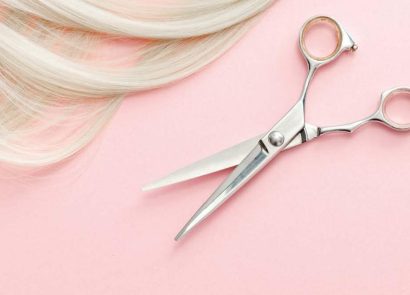Bloating, headaches, weight-gain, low mood, tiredness – these are just some of the nasty symptoms you could be suffering with, all because you are simply eating the wrong thing. And what’s ‘wrong’ for you can be ‘right’ for the next person, and vice versa. Food sensitivity takes many forms, and it’s a widespread problem…
The facts
According to the NHS, as many as one in five of us have a food intolerance. A genuine food allergy on the other hand, is far less common – said to affect one in 50 British adults – but it can pose a serious health risk. “A food allergy is an immune system response. Symptoms usually come on fast and can range from mild – like tingling lips, rashes, etc – to severe, such as blocked airways and breathing difficulties,” says Lindsey McManus, deputy CEO at Allergy UK (allergyuk.org). “A food intolerance, on the other hand, is not life-threatening, even though it can make people feel pretty unwell and miserable. It’s not your immune system reacting; it can be due to lots of things which makes it very difficult to pinpoint,” she adds. To make matters worse, symptoms are nearly always delayed, occurring six, eight, 12, or even 24 hours after you’ve eaten the food, as Lindsey explains.
The reality
The effects of a food intolerance include IBS-type symptoms (like nausea, bloating and diarrhoea), as well as weight gain, migraines, asthma, sinusitis, skin problems, fatigue, constipation and more. Not great news for your fitness goals! It stands to reason that if you don’t feel on top form you can’t look your best or perform at your peak. Plus, if your body isn’t using the fuel from the foods you eat effectively, you’re never going to be firing on all cylinders. And after all, who feels like hitting the gym when they’ve got a raging headache? On a serious note, things like diarrhoea can cause dehydration, so you must be extra careful when exercising if you’re suffering, particularly with endurance training and in heat.
Suspect certain foods are causing you problems? You’re in good company. Top athletes have suffered at the hands of food sensitivities, including Paula Radcliffe, who famously couldn’t finish her marathon at the Athens Olympics in 2004. At the time she didn’t understand why, but the pro runner later found out she had food intolerances which could have been to blame.
The diagnosis
Paula discovered that she was sensitive to a number of foods, including wheat and oats, through YorkTest. “This hospital standard test involves a finger prick blood test to measure antibody reactions to 158 different food and drink ingredients.” explains Dr Gill Hart, a bioscientist and expert in food intolerance at YorkTest (yorktest.com). “It pinpoints the foods your body is reacting to so you know exactly what to eliminate from your diet and there is no second guessing.”
Once you remove the problem foods you can expect to feel better pretty fast. A study involving more than 5,000 people showed that three out of four of those who took a YorkTest reported an improvement in their symptoms and 68 percent noticed this within three weeks.
Other ways to find out if you have a food intolerance include hair testing, kinesiology or muscle testing, and Vega testing, which uses electronic kit to detect your body’s electromagnetic response to foods. But there are question marks over the accuracy of these methods. “The only way we recommend to identify a food intolerance is by doing a food and symptoms diary over two or three weeks,” says Allergy UK’s Lindsey. “This way you can see a pattern emerging with certain foods. Then see your GP, who can refer you to a dietitian, rule out allergies, and check you out in case your symptoms are due to something other than food sensitivities,” she advises.
Start by eliminating the trigger foods from your diet one at a time. “Don’t remove lots of food groups at once otherwise you won’t know what is making you feel better. And, there are some very important food groups that you might be missing out on unnecessarily,” says Lindsey.
The suspects
Well-known dietary culprits are wheat and gluten, plus dairy and lactose, along with yeast. But alcohol can also bring on food intolerance symptoms (and we’re not just talking about a hangover induced by too much Pinot!), some people lack enzymes needed to digest alcohol effectively. Also, booze increases gut permeability, which can cause some people to react to key foods only when washed down with a tipple.
What’s more, wine and beer contain naturally occurring chemicals known as vasoactive amines – like histamine, tyramine, and phenylethylamine – to which many people are sensitive. Blue cheese, cured meat, coffee and chocolate are also sources of these chemicals.
The future
There’s no need to weep if you find out you’re sensitive to your favourite eats. “The good news is that food intolerance isn’t necessarily for life and foods can sometimes be reintroduced after a period of elimination, without ill effect,” Dr Gill Hart tells us.
“Absolutely, food tolerances can come and go,” adds Lindsey. “Once you’ve removed your trigger foods from your diet for two or three months, start to reintroduce them gradually and see how you feel. Often people can tolerate them again but just not in the quantities they had eaten them in before.”
Sometimes, food intolerance symptoms can be brought on by simply eating too much of something. “Your digestion can struggle if you’re eating the same foods over and over again. For example, a wheat-based cereal for breakfast, a sandwich at lunchtime, pasta in the evening and a couple of biscuits; some people just can’t tolerate that amount of wheat,” Lindsey explains.
Wheat- and dairy-free food has become quite trendy of late, and somehow they seem healthier – but is there any truth to this? “Unless you’re having a reaction to something in your diet there is no reason why you should eat free-from foods,” says Lindsey. “But, some people simply feel better and less bloated if they avoid wheat and gluten, for example, so they may want to do that as a lifestyle choice.”
The cornerstone of any healthy diet is variety, we reckon. It’s all about listening to your body and finding a balance that works for you.}




















